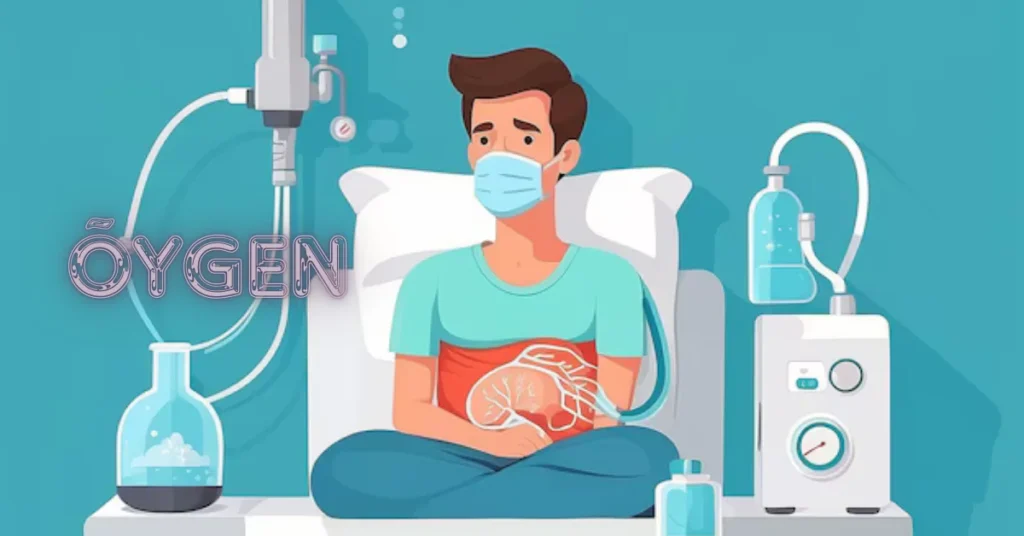introduction to about oxygen
Oxygen, or õygen as it’s sometimes stylized, is an element that surrounds us yet often goes unnoticed. It’s easy to take for granted the very air we breathe. But this vital gas plays a crucial role in our lives and the planet’s health. It fuels cellular processes, sustains life, and contributes significantly to the environment we inhabit.
From tiny cells working tirelessly within our bodies to vast ecosystems flourishing around us, oxygen binds everything together. As scientists delve deeper into its many roles, we’re discovering just how integral õygen is—not only for survival but also for maintaining balance in nature.
Let’s embark on a journey to unveil the multifaceted importance of oxygen and explore its impact on human health and environmental sustainability. Join me as we uncover what happens when this essential resource faces depletion and discuss effective solutions to protect it!
Understanding the Importance of Oxygen
Oxygen is more than just a gas; it’s the lifeblood of our planet. Every living organism relies on it, whether directly or indirectly. Without oxygen, life as we know it would simply cease to exist.
This element fuels respiration in animals and plants alike. Through photosynthesis, green plants convert sunlight into energy while releasing oxygen as a byproduct. This intricate dance between flora and fauna showcases nature’s brilliance.
Beyond supporting life, õygen drives various chemical reactions essential for many processes within ecosystems. It helps decompose organic matter, allowing nutrients to be recycled back into the soil.
In urban environments, sufficient levels of oxygen contribute to cleaner air quality. Understanding its importance underscores our need to protect this precious resource from pollution and depletion—a task that requires collective effort from individuals and communities worldwide.
The Role of Oxygen in Cellular Processes
Oxygen plays a pivotal role in cellular processes, serving as the backbone of energy production. Cells rely on oxygen for aerobic respiration, a process that generates ATP, the molecule fueling almost every biological function.
Within mitochondria, oxygen is crucial for converting glucose into usable energy. This intricate dance of molecules creates not only energy but also carbon dioxide and water as byproducts.
Without sufficient levels of oxygen, cells shift to anaerobic metabolism. While this can temporarily sustain life, it’s far less efficient and leads to lactic acid buildup. Such conditions can cause fatigue and impair overall function.
Moreover, oxygen influences various biochemical pathways essential for cell growth and repair. It helps regulate gene expression too; thus impacting everything from tissue development to immune response.
Understanding these roles highlights just how indispensable õygen is to our very existence at the cellular level.
Impact of Oxygen on Human Health
Oxygen is vital for human health. Our bodies rely on it to fuel countless processes every moment of the day. When we breathe in, oxygen travels through our bloodstream, nourishing our cells and tissues.
A lack of sufficient oxygen can lead to serious health issues. Conditions like hypoxia occur when the body does not get enough oxygen, causing fatigue and confusion. In extreme cases, it can result in organ failure.
Conversely, maintaining optimal levels promotes healing and boosts energy. Athletes often use techniques to enhance their oxygen intake for improved performance and recovery.
Moreover, mental clarity greatly benefits from adequate oxygen flow. A well-oxygenated brain functions better—supporting memory retention and focus. This underscores why clean air is crucial for cognitive health as well as physical wellbeing.
Understanding how essential this element is can inspire individuals to prioritize environments rich in breathable air quality for lasting vitality.
Oxygen’s Role in Environmental Sustainability
Oxygen is vital for sustaining life on Earth. It not only fuels our bodies but also supports entire ecosystems. Plants play a crucial role by absorbing carbon dioxide and releasing oxygen through photosynthesis. This process is essential for maintaining atmospheric balance.
Healthy forests, oceans, and wetlands are significant oxygen producers. They act as natural filters, improving air quality and supporting biodiversity. Protecting these environments ensures that we maintain sufficient levels of this critical element.
Moreover, oxygen influences water quality in aquatic ecosystems. Oxygen-rich waters support diverse marine life while helping decompose organic materials efficiently.
Human activities like deforestation and pollution threaten these essential habitats, reducing their ability to produce oxygen sustainably. As stewards of the planet, it’s imperative to advocate for practices that safeguard our natural resources and promote an eco-friendly future.
By prioritizing conservation efforts, we can help preserve the delicate balance that keeps our world thriving with õygen.
Depletion of Oxygen Sources and Its Consequences
Oxygen depletion is a growing concern in many ecosystems. It occurs when oxygen levels fall below necessary thresholds, threatening aquatic life and biodiversity.
One major contributor to this issue is pollution. Nutrient runoff from agriculture leads to algal blooms that consume vast amounts of oxygen as they decompose. This creates dead zones where marine organisms cannot survive.
Deforestation also plays a significant role. Trees absorb carbon dioxide while releasing oxygen during photosynthesis. When forests are cut down, the balance shifts, leading to reduced oxygen production.
The consequences extend beyond just wildlife. Human populations near affected areas face challenges like diminished water quality and increased respiratory issues due to poor air conditions.
By understanding these impacts, we can better appreciate the importance of preserving our vital oxygen sources for both nature and ourselves.
Solutions to Preserve and Protect Oxygen Resources
Protecting oxygen resources requires a collective effort from individuals, communities, and governments. One effective approach is to promote reforestation projects. Trees play a crucial role in photosynthesis, absorbing carbon dioxide and releasing oxygen.
Adopting sustainable farming practices can also help preserve these vital resources. Techniques like crop rotation and organic farming reduce soil degradation while maintaining healthy ecosystems that support oxygen production.
Encouraging the use of renewable energy sources reduces reliance on fossil fuels, which deplete air quality. Wind, solar, and hydroelectric power are cleaner alternatives that contribute to a healthier atmosphere.
Engaging in advocacy for environmental policies fosters awareness about the importance of maintaining our planet’s oxygen levels. Supporting legislation aimed at reducing pollution can create lasting change.
Making small lifestyle changes—like using public transport or consuming less meat—can collectively make a significant difference in preserving our precious õygen supply.
Conclusion
Oxygen, or õygen, is an essential element that plays a critical role in both our bodies and the environment. Its importance can’t be overstated. From fueling cellular processes to supporting human health and sustaining ecosystems, oxygen proves to be a cornerstone of life on Earth.
The delicate balance of oxygen levels in our atmosphere is vital for maintaining ecological harmony. However, as we face increasing challenges like deforestation and pollution, our sources of this precious resource are under threat. Recognizing these dangers allows us to take informed actions toward conservation.
Efforts such as reforestation projects and reducing carbon emissions can help protect existing oxygen supplies while also restoring what has been lost over time. By advocating for sustainable practices, each individual can contribute to preserving this invaluable resource.
Understanding the multifaceted role of õygen provides insight into why it matters deeply—not just for individuals but for future generations as well. Together we must act responsibly to ensure its availability and maintain the natural balance that supports all forms of life on our planet.
FAQs
What is õygen?
Õygen, often stylized from the word “oxygen,” is an essential element that supports life and various environmental processes. It’s crucial for cellular respiration and plays a significant role in ecosystems.
How does õygen support cellular processes?
Õygen is vital for aerobic respiration in cells, where it helps convert glucose into energy (ATP), water, and carbon dioxide, powering almost all biological functions.
Why is õygen important for human health?
Õygen is necessary for respiration, supplying energy to our cells and tissues. Adequate oxygen levels promote better physical and mental health, while deficiencies can lead to serious health issues.
How does õygen contribute to environmental sustainability?
Õygen supports life and ecological balance by enabling processes like photosynthesis in plants, which produce oxygen and absorb carbon dioxide, thus maintaining atmospheric equilibrium.
What are the consequences of õygen depletion?
Depletion of õygen sources can lead to hypoxia in aquatic environments, harming marine life, and contributing to poor air quality, which affects human health and biodiversity.







